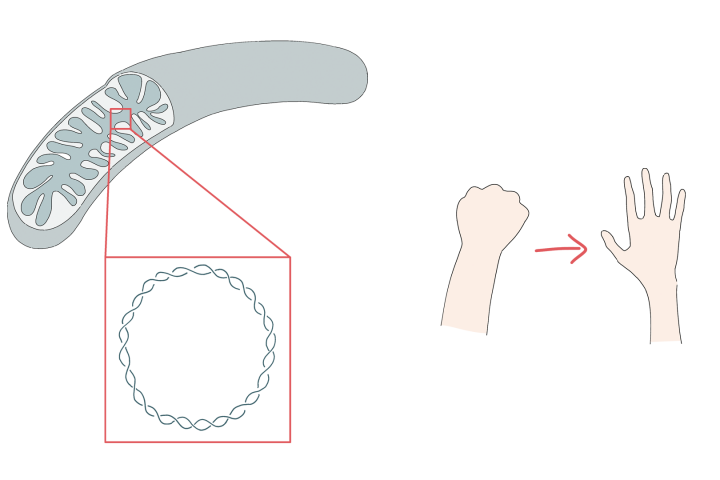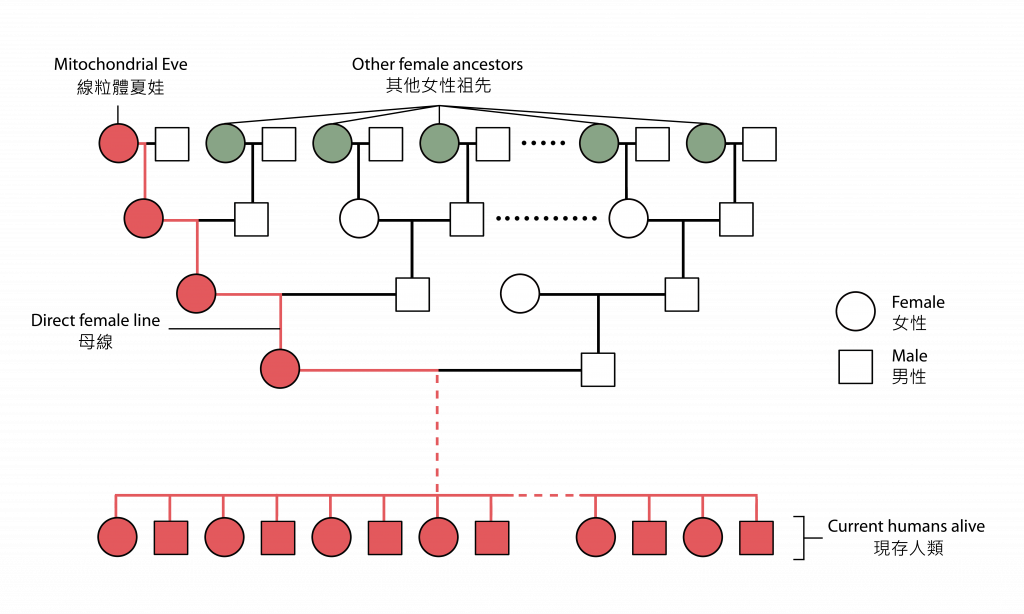Mitochondria: So Much More Than the Powerhouses of the Cell
By Kit Kan 簡迎曦

Powerhouse and Suicide Bomb
For those of you who have some basic understanding of biology, you may already know the mitochondria as the powerhouses of the cell. These double-membrane structures serve as sites for cellular respiration, in which sugar and oxygen are used to produce adenosine triphosphate (ATP), the energy currency that our cells use. Sperms have plenty of mitochondria for their long distance swim in search of an egg. Muscle cells need mitochondria to contract and bring about movement. Neurons use the energy generated by mitochondria to send electrical and chemical signals. However, powering the cell is not all that the mitochondria do.
Our cells engage in a process called apoptosis, which is essentially suicide for cells. During embryonic development, some cells have to die to carve out the body structures that we now have. For instance, our hands and feet would be webbed like frog’s if the cells between our fingers and toes did not undergo apoptosis. As apoptosis is also a way for our body to eliminate cells that are potentially cancerous, defective apoptosis can result in cancer. One pathway of apoptosis involves mitochondria. Mitochondria contain a protein called cytochrome c, which when released to the cytoplasm, binds to other proteins to form apoptosomes and facilitate apoptosis. In short, mitochondria are not just powerhouses, but also suicide bombs.
Origin and Inheritance
Mitochondria are not only interesting in the functions they serve, but also their origin. The mitochondria came from a process named endosymbiosis. More than 1.45 billion years ago [1], a unicellular organism is believed to have engulfed another unicellular organism, and they formed a symbiotic relationship. The endosymbiont (the one being engulfed) became the mitochondria. There are two different theories as to whether the host was a prokaryote or a more full-fledged eukaryote, but the hypothesis that the host was a prokaryote is more widely accepted because the ubiquity of mitochondria in eukaryotes can then be explained, providing that eukaryotes were evolved from the mitochondrial endosymbiosis in a prokaryote [1]. Mitochondria are similar to bacteria in many ways. One major feature and evidence of endosymbiosis is that mitochondria contain their own DNA that is organized in circular chromosomes.
Unlike nuclear DNA, the inheritance of mitochondrial DNA is strictly maternal. During fertilization, mitochondria from the sperm are actively removed. Therefore, no one inherits mitochondrial DNA from his or her father. Mitochondrial DNA encodes for genes that are essential to the oxidative phosphorylation process in the mitochondria. Since the mitochondria mainly generate energy by oxidative phosphorylation, the mutation in mitochondrial DNA can lead to disorders in tissues with high energy demands, such as muscles and brain [2].
Mitochondrial DNA is not just clinically important, but also provides a convenient way for ancestry tracing. Since mitochondrial DNA is only inherited from the mother, scientists can trace our maternal ancestry using this feature. In a study published in 1987, taking 147 samples from different populations, scientists mapped the samples onto an evolutionary tree based on the similarity of their mitochondrial DNA sequence. They found proof that all current mitochondrial DNA originated from one woman in Africa, supporting the popular “out-of-Africa” model [3]. The matrilineal most recent common ancestor of all living humans is often called the Mitochondrial Eve in human genetics. However, it is not to say that Mitochondrial Eve was the only woman alive at the time; our nuclear DNA suggests that we do have other female ancestors [4]. In other words, we all share a common maternal great-great…grandmother, but we also have female ancestors, just not in the direct female line.

After you use the energy generated by your mitochondria to read this article and marvel at the beauty of these complex structures, maybe you can go thank your mother, grandmother and great grandmother for the functional mitochondria that they passed on to you!
References
[1] Martin WF, Mentel M. The Origin of Mitochondria. Nat Educ. 2010;3(9):58.
[2] Chial H, Craig J. mtDNA and Mitochondrial Diseases. Nat Educ. 2008;1(1):217.
[3] Cann RL, Stoneking M, Wilson AC. Mitochondrial DNA and human evolution. Nature. 1987;325:31-36.
[4] Takahata N. Allelic Genealogy and Human Evolution. Mol Biol Evol. 1993;10(1):2-22.